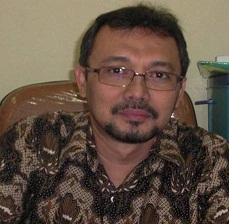DeterminationoOf Critical Control Points (CCP) in Frozen Vannamei Shrimp Product (Litopenaeus vannamei) in PT. Grahamakmur Citapratama, Sidoarjo -East Java
Downloads
One of fishery products in Indonesia, namely shrimp. There are many products derived shrimp, there are frozen, fresh or shrimp species. Talk about International trade Indonesia one of which is exports, shrimp becomes a commodity which dominate the fishery exports, with the value of the donated amount of US $ 1.280 million, followed by tuna US $ 606 million, other fish US $ 700 million and fishery products other US $ 746 million. Exports of shrimp is the largest export value in penyumbangannya basis. Shrimp exports alone expanded to various countries in the world. The shrimp itself is set for Indonesia's main export commodity. PT. Grahamakmur Ciptapratama is one of the cold storage company exporters of shrimp that were in Sidoarjo, East Java. To maintain the quality of shrimp for export, certainly requires appropriate processes and technologies that support. It is also necessary human resources able to handle and process the shrimp according to the procedures applied. Based on the description above, the writer interested to know and assess the process of shrimp processing activities were noticed Critical Control Points (CCP). In the production process Frozen Vannamei Shrimp (Litopenaeus vannamei) in PT. Grahamakmur Ciptapratama, Sidoarjo - East Java, part of the raw material receiving, cooking, and a metal detector is a Critical Control Points (CCP), which needs to be maintained and monitored. The need for control of the CCP aims for the creation of food safety for consumers.
Badan Standarisasi nasional (BSN). (2007). SNI 01-2705-2005. Udang beku. Jakarta: Dewan Standarisasi Nasional.
Damelia, D. (2015). Peramalan nilai rupiah terhadap US dollar untuk mem-persiapkan ekspor unggulan Indonesia. Economics Develop-ment Analysis Journal, 4(2).
Dressen, D.W. (1998). Hazard analysis and critical control point systems as a preventive tool. JAVMA, 213: 1741- 1744
Fardiaz, s. (1996). Aplikasi HACCP dalam industri pangan. Bogor: Jurusan Teknologi Pangan dan Gizi. Institut Pertanian Bogor.
HACCP Manual. (2014). HACCP Manual PT. Graha Makmur Cipta Pratama. Sidoarjo: PT. Graha Makmur Cipta Pratama.
Hadiwiyoto, S. (1993). Teknologi pengo-lahan hasil perikanan. Yogya-karta: CV Liberty.
Haliman, R. W & Adijaya, S. D. (2005). Udang vannamei. Jakarta: Pene-baran Swadaya
Heizer, J. & Render, B. (2001). Operations management. New Jersey: Pearson Education, Inc.
Herjanto, E. (2007). Manajemen operasi. Jakarta: PT Grasindo.
Indrajit, R. E. & D. Richardus, D. (2011). Konsep manajemen supply chain: cara baru memandang mata rantai penyediaan barang. Jakarta: Grasindo.
Kementerian Kelautan dan Perikanan. (2015). www.kkp.go.id. Diakses tanggal 25 November 2015
Kolbe, E. & Kramer, D. (2007). planning for seafood freezing. Alaska: Alaska Sea Grant.
National Seafood HACCP Alliance. (2011). Hazard analysis critical control point training curriculum. Florida: Florida Sea Grant.
Nazir, M. (2011). Metode penelitian. Bogor: Ghalia Indonesia.
Norman, N. D. (2008). Teknologi penga-wetan pangan. Jakarta: Univer-sitas Indonesia Press.
Nuryani, A. G. B. (2006). Pengendalian mutu penanganan udang beku dengan konsep hazard analysis critical control point (Studi kasus di Kota Semarang dan Kabu-paten Cilacap). Tesis. Semarang: Program Pascasarjana Univer-sitas Diponegoro.
USDA. (2003). Shrimp nutrition in- formation. ww.healthzone.com. Diakses tanggal 25 November 2015
Winarno F.G., & Surono. (2002). HACCP dan penerapannya dalam industri pangan. Bogor: M-Brio Press.
Copyright (c) 2020 Journal of Marine and Coastal Science

This work is licensed under a Creative Commons Attribution-NonCommercial-ShareAlike 4.0 International License.













